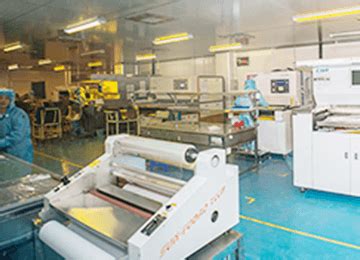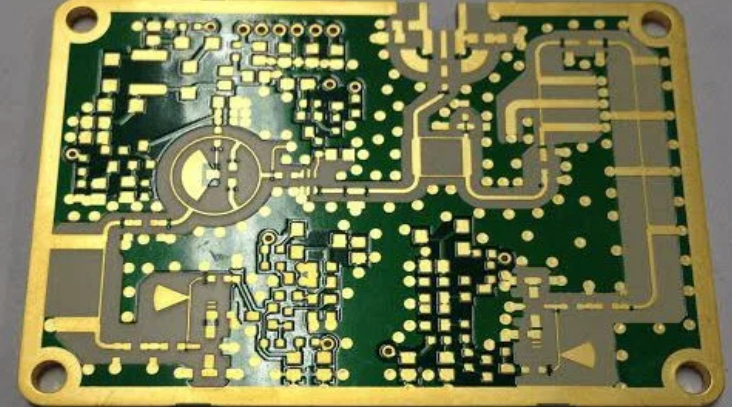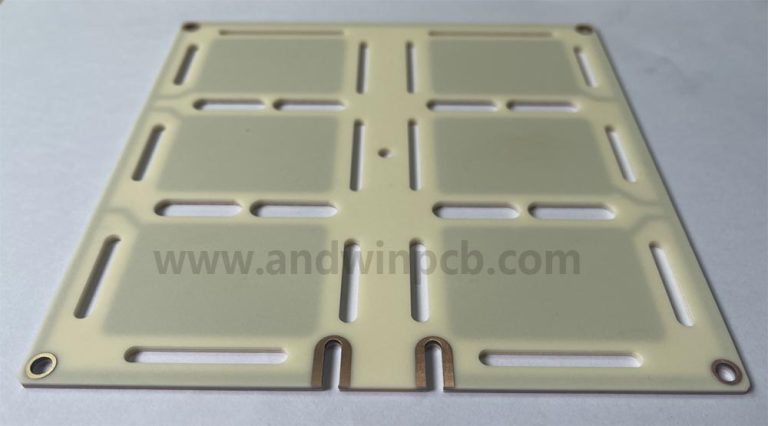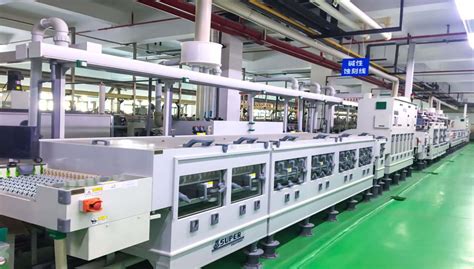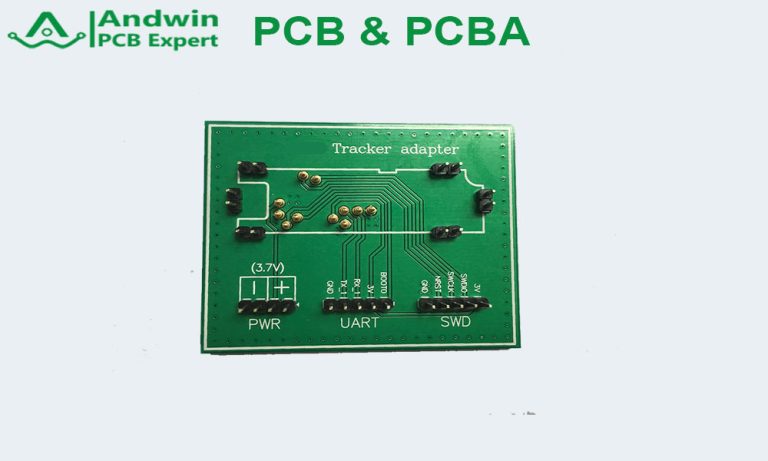Essential Criteria for Selecting High-Frequency PCB Manufacturers
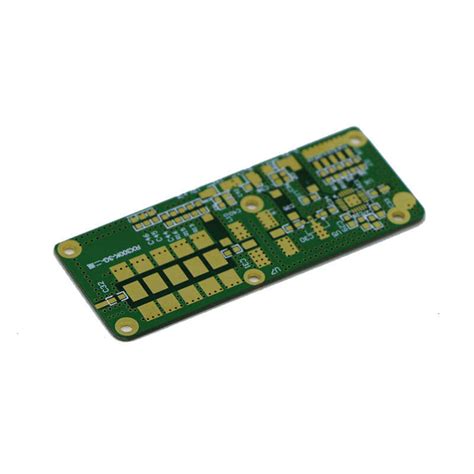
Key Takeaways
When evaluating PCB manufacturing companies for high-frequency applications, focus on their mastery of signal integrity and thermal management capabilities. Prioritize manufacturers demonstrating expertise in low-loss materials with controlled Dk/Df values—critical for minimizing signal distortion in RF designs. Verify their ability to maintain precision tolerances (e.g., ±0.1mm trace widths) and ask about their process controls for impedance matching.
Tip: Always request material certification sheets to confirm dielectric properties like dissipation factor (Df < 0.005) for millimeter-wave applications.
Assess how they optimize PCB manufacturing costs without compromising high-frequency performance—this often involves balancing advanced HDI technology with scalable production methods. Reliable PCB manufacturing business partners should provide transparent data on thermal stability (https://www.andwinpcba.com) to validate manufacturer claims.
Finally, confirm their quality assurance protocols for plating uniformity and surface roughness control, as these directly impact insertion loss above 10 GHz. By aligning these criteria with your project’s frequency range and power requirements, you’ll mitigate risks in high-speed PCB manufacturing.

High-Frequency PCB Material Selection Guide
When selecting materials for high-frequency PCB manufacturing, you must prioritize dielectric constant (Dk) and dissipation factor (Df) values. These parameters directly impact signal integrity, especially in RF and microwave applications. Low Dk ensures minimal signal delay, while low Df reduces energy loss—critical for high-speed circuits. Common materials like Rogers, PTFE, or specialized laminates offer optimized performance but vary in PCB manufacturing cost and compatibility with your design requirements.
| Material Type | Dk (1-10 GHz) | Df (×10⁻⁴) | Thermal Conductivity (W/m·K) |
|---|---|---|---|
| Rogers 4350B | 3.48 | 2.8 | 0.62 |
| PTFE (Teflon) | 2.1 | 1.5 | 0.25 |
| FR-4 (Modified) | 4.3 | 16 | 0.3 |
Thermal stability is another key factor. Materials with high glass transition temperature (Tg) resist warping under heat, ensuring reliability in demanding environments. For PCB manufacturing companies, balancing performance with PCB manufacturing business constraints—like material availability and processing complexity—is essential. For instance, PTFE offers superior high-frequency properties but requires specialized handling, increasing production time and cost.
Always verify if your chosen PCB manufacturing partner can achieve tight tolerances (e.g., ±0.001" for trace widths) and has expertise in multilayer stacking for HDI designs. This ensures your high-frequency PCB performs consistently across temperature fluctuations and frequency ranges.
Thermal Stability in HF PCB Design
When evaluating PCB manufacturing companies for high-frequency applications, thermal stability emerges as a critical factor influencing long-term reliability. High-frequency circuits generate significant heat during operation, and materials with poor thermal resistance can warp or degrade, compromising signal integrity. You’ll want to prioritize substrates with low coefficient of thermal expansion (CTE), which maintain dimensional stability across temperature fluctuations. Advanced PCB manufacturing processes, such as controlled impedance lamination and precision copper balancing, further mitigate thermal stress.
Cost considerations in PCB manufacturing business models often lead to compromises, but opting for manufacturers specializing in thermally conductive dielectrics (like Rogers or PTFE-based materials) ensures optimal heat dissipation. Verify that suppliers conduct rigorous thermal cycling tests, as these validate a board’s ability to withstand repeated thermal shocks—a non-negotiable for military or aerospace applications. Additionally, inquire about their expertise in integrating cooling solutions, such as embedded heat sinks or thermal vias, which enhance performance without inflating PCB manufacturing cost.
By aligning material choices and process controls with your thermal requirements, you safeguard against premature failures while maintaining the precision demanded by high-frequency designs.
Precision Tolerances for RF Circuit Boards
When working with RF circuit boards, achieving precision tolerances is non-negotiable. Even minor deviations in trace width, spacing, or dielectric thickness can disrupt impedance control, leading to signal reflections or losses. For PCB manufacturing of high-frequency designs, you need suppliers capable of maintaining tolerances within ±0.0002" for critical features like microstrip lines or via placements. This level of accuracy ensures consistent performance across microwave and millimeter-wave frequencies.
Top-tier PCB manufacturing companies leverage advanced laser direct imaging (LDI) and automated optical inspection (AOI) systems to meet these stringent requirements. However, tighter tolerances often correlate with higher PCB manufacturing cost, as they demand specialized equipment and rigorous quality checks. Balancing cost-efficiency with performance requires evaluating a manufacturer’s process controls—ask about their statistical process control (SPC) methods or certifications like ISO 9001.
In the PCB manufacturing business, suppliers with expertise in RF/microwave applications understand how material properties (e.g., Dk/Df stability) interact with fabrication tolerances. For instance, low-Df laminates minimize signal loss but demand flawless etching to preserve impedance targets. Always verify whether a manufacturer’s capabilities align with your design’s thermal and electrical demands—oversights here risk compromising reliability in high-frequency environments.
Evaluating RF/Microwave Manufacturing Expertise
When assessing PCB manufacturing companies for high-frequency applications, their expertise in RF/microwave technologies becomes a critical differentiator. You’ll want to verify their experience in handling substrates with ultra-low Dk/Df values, as even minor inconsistencies can degrade signal integrity. Look for manufacturers that employ advanced processes like laser-drilled microvias or controlled-depth milling, which are essential for minimizing parasitic effects in high-speed designs.
A key consideration is whether the PCB manufacturing workflow integrates rigorous testing protocols, such as time-domain reflectometry (TDR) or vector network analysis (VNA), to validate impedance matching and insertion loss. Companies specializing in RF/microwave applications often maintain cleanroom environments to prevent contamination during lamination, ensuring consistent dielectric properties.
Cost optimization in PCB manufacturing business models shouldn’t compromise precision. For instance, ask how they balance PCB manufacturing cost with the need for tight tolerances (e.g., ±0.1mm trace widths) or specialized surface finishes like immersion silver. Transparent communication about their capability to scale production while maintaining thermal and electrical stability is equally vital. Finally, review case studies or client testimonials to confirm their track record in delivering reliable high-frequency solutions.
Dk/Df Values and Signal Integrity Optimization
When evaluating PCB manufacturing companies for high-frequency applications, understanding Dk (dielectric constant) and Df (dissipation factor) values is critical. These parameters directly influence signal integrity, determining how efficiently electromagnetic waves propagate through the substrate with minimal distortion. Materials with stable Dk ensure consistent impedance control, while low Df values minimize signal loss, especially in RF and microwave designs.
For high-frequency PCB manufacturing, prioritize materials like PTFE-based laminates or ceramic-filled hydrocarbons, which offer superior Dk/Df stability across varying temperatures and frequencies. However, balancing PCB manufacturing cost with performance is essential—premium materials may increase expenses but reduce long-term reliability risks. Reputable PCB manufacturing businesses often provide material datasheets and simulations to validate Dk/Df performance under your specific operating conditions.
Additionally, consider how thermal management aligns with Dk/Df characteristics. Materials with poor thermal stability can drift in dielectric properties, degrading signal integrity over time. Partnering with PCB manufacturing experts who rigorously test substrates for both electrical and thermal performance ensures designs meet stringent high-frequency requirements without compromising scalability or cost-efficiency. This alignment between material science and manufacturing precision is what separates competent suppliers in high-frequency PCB production.
HDI Technology in High-Frequency Applications
When designing high-frequency circuits, integrating HDI (High-Density Interconnect) technology becomes critical for balancing performance and miniaturization. This approach enables tighter trace spacing, microvias, and multilayer stacking—features essential for maintaining signal integrity in RF/microwave systems. For PCB manufacturing companies, mastering HDI processes directly impacts their ability to meet precision tolerances required for 5G, radar, or satellite applications.
You’ll want to verify whether manufacturers use advanced laser drilling and sequential lamination techniques, as these methods reduce parasitic capacitance and impedance mismatches. While PCB manufacturing cost may rise with HDI complexity, the trade-off lies in achieving higher reliability and reduced signal loss—a non-negotiable for high-frequency designs. Additionally, ensure the PCB manufacturing business you select employs materials compatible with HDI structures, such as low-Dk laminates, to prevent dielectric losses at elevated frequencies.
Transitioning from traditional layouts to HDI requires expertise in thermal management, as densely packed layers can trap heat. Reputable PCB manufacturing partners will demonstrate proven strategies for dissipating thermal energy without compromising circuit density. By prioritizing HDI capabilities during vendor evaluation, you align your project with technologies that address both current performance demands and future scalability needs.
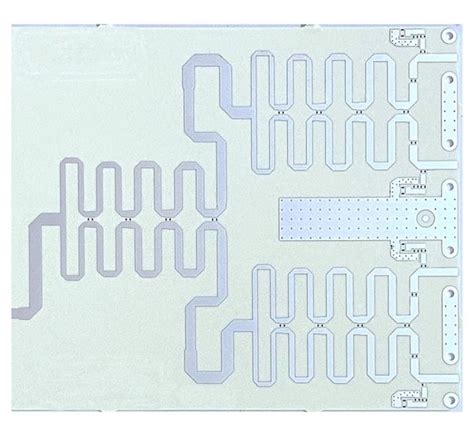
Key Factors for Reliable HF PCB Performance
When evaluating PCB manufacturing companies for high-frequency applications, you must prioritize technical capabilities that directly impact signal integrity and long-term reliability. Material selection remains foundational—low Dk/Df values in substrates minimize signal loss and phase distortion, especially at microwave frequencies. However, even the best materials underperform if thermal stability isn’t rigorously addressed during design. Look for manufacturers that integrate advanced cooling solutions, such as embedded thermal vias or metal-core substrates, to manage heat dissipation in densely packed RF circuits.
Precision in PCB manufacturing processes is non-negotiable. Tight impedance tolerances (often ±5% or better) require laser-direct imaging and automated optical inspection systems to maintain consistency. For high-frequency designs, even minor deviations in trace width or dielectric thickness can degrade performance. This level of precision inevitably influences PCB manufacturing cost, but partnering with specialists who optimize production workflows can balance economics with quality.
Finally, verify the PCB manufacturing business has proven expertise in RF/microwave applications through case studies or client testimonials. Their ability to troubleshoot signal reflection issues or implement controlled impedance layouts often separates adequate suppliers from those delivering mission-critical reliability. By aligning these factors, you ensure your high-frequency PCBs meet both performance benchmarks and operational durability requirements.
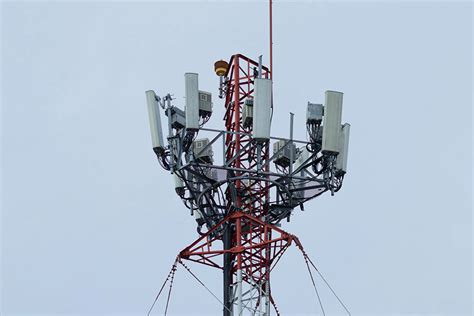
Choosing Manufacturers with Thermal Management Skills
When evaluating PCB manufacturing companies for high-frequency applications, thermal management skills are non-negotiable. High-frequency circuits generate significant heat due to rapid signal transitions, and poor dissipation can degrade performance or shorten component lifespans. You’ll want partners who prioritize thermal stability in both material selection and design. For instance, substrates with high thermal conductivity (like ceramic-filled laminates) and advanced copper weight balancing help mitigate hotspots.
Reputable PCB manufacturing providers employ simulation tools to predict thermal behavior during design, ensuring layouts minimize heat accumulation. They also validate designs through rigorous testing, such as thermal cycling and infrared imaging, to confirm real-world reliability. While PCB manufacturing cost is a consideration, opting for suppliers without proven thermal expertise risks costly redesigns or field failures.
Additionally, assess how a PCB manufacturing business integrates thermal management into broader quality protocols. Do they pair material certifications (e.g., UL ratings) with process controls for consistent lamination and plating? Can they tailor solutions for your specific power density requirements? By prioritizing these factors, you ensure your high-frequency PCBs maintain signal integrity and durability, even under demanding operational conditions.
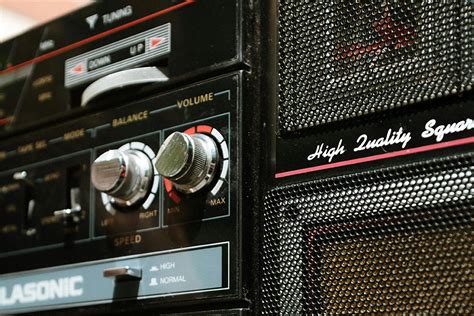
Conclusion
When finalizing your choice among PCB manufacturing companies, prioritize suppliers that demonstrate mastery across both technical and operational dimensions. Ensure they maintain rigorous control over material properties like Dk/Df values while balancing PCB manufacturing cost with performance demands. A reliable partner should offer transparent documentation of their processes, from impedance control to multilayer lamination, aligning with your project’s signal integrity requirements.
Look for manufacturers with proven expertise in RF/microwave applications, as this directly impacts their ability to handle complex designs without compromising PCB manufacturing business timelines. Advanced thermal management capabilities and investments in HDI technology further distinguish leaders in this field. By cross-referencing these criteria with your specific needs, you’ll mitigate risks associated with high-frequency applications while securing a partnership that scales with evolving technical challenges. Ultimately, the right manufacturer becomes an extension of your engineering team, ensuring reliability from prototype to full-scale production.
FAQs
What should you prioritize when choosing PCB manufacturing companies for high-frequency applications?
Focus on firms with proven expertise in RF/microwave design and material science. Verify their ability to handle low-Dk/Df substrates and maintain precision tolerances—critical for minimizing signal loss in high-frequency circuits.
How does PCB manufacturing cost vary for high-frequency projects?
Costs depend on material choices (e.g., Rogers vs. FR-4), layer count, and tight impedance control requirements. While advanced materials raise initial expenses, they reduce long-term risks like thermal degradation, ensuring reliability in high-speed applications.
What separates specialized PCB manufacturing providers from generalists?
Specialized manufacturers invest in HDI technology and advanced testing equipment (e.g., TDR for impedance verification). They also offer design support to optimize thermal management and signal integrity, which generic PCB manufacturing business operations often lack.
Why is thermal stability a non-negotiable factor?
High-frequency circuits generate significant heat, demanding materials with low thermal expansion coefficients. Partnering with manufacturers skilled in thermal dissipation techniques prevents delamination and ensures stable performance across temperature cycles.
Ready to Partner with Experts?
For tailored solutions in high-frequency PCB manufacturing, please click here to connect with engineers who specialize in RF/microwave design and advanced material integration.


